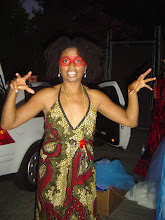Lately, I've noticed an explosion of one hour dance classes.
One hour? What can you possibly do in one hour, other than warm up?
Well, if it were an audition, you could conceivably show the routine twice and cut over half the people in the room.
But if it were a yoga class, you could actually do an entire 21 poses. Well, an hour and 15 minutes.
But why model a dance class on a yoga class? They are rather distinct things.
It seems that the answer lies not in kinetic research, or physiology, or even some sort of wild psychological take on action and time. No, the answer can be found in the phrase, "market rate."
Here in LA, especially on the West Side, the explosion of Yoga studios and wellness spas has lead to a paradigm shift in the concept of time/space/place/body. It used to be understood that the body needed time to get warm, to get ready, to then move, and then to calm itself, or at least acknowledge the other bodies in the space. With Yoga classes designed more to maximize space to profit, classes of any movement genre have had to follow suit, or loose out all together.
Do I have a lot of research to back this up? Nope, I just have a hunch. And this is only part of the hunch. But it's a big part of it.
The spaces solely dedicated to Yoga would have been multi-use spaces 10 years back, giving the clientele an opportunity to get out of their comfort zone and try someone else's moves; or they would've been spaces held by a dance company, used primarily for their company classes, and rented out on occasion at rock bottom prices to fledgling companies or extremely interesting teachers/choreographers.
These days, there is a plethora of Yoga "techniques," leaving little room for dance classes, but additionally, these spaces are retrofitted to accommodate a movement practice that has no leaps, turns, or pivots: the floors suck, in dancer terms.
But we try to use these spaces, and find ourselves in pain, but still getting by so we think, because we are a bit safer ensconced in a yoga studio than trying to tough it out in a gorgeous, light-filled dance studio with a sprung wooden floor and, gasp, a shower...and a client base of production companies, movie studios, and TV choreographers.
This is the other part of the big hunch.
So You Think You Can Dance, Dancing with the Stars, Dance Wars, The Freshest Crew (or whatever inane name it has) have begun to exert a centrifugal force on dance space in the city. My brother used to dance for a cruise line, Royal Caribbean. To give you some idea of the type of money we are talking about here, they would fly in ALL cast members for ALL ships docking on West Coast, put them up at The Plaza near Park/LaBrea, and rehearse them for 2 - 3 weeks each cast, before shipping them off. When DWTS went mega, all of a sudden, the studio near their swank, but shared housing, became unavailable, opting to host the show.
Now if Royal Caribbean would rather give their dancers a bus pass and make them show up almost near Universal City Walk to rehearse, what are the chances that a dancer/choreographer trying to stay in the game and eat at the same time can get a studio space that reflects what she or he feels and represents through her/his dance?
This is a VERY big problem.
McYoga on one side, and wannabe stardom on the other, and then underneath, the Industrial market (commercials, infomercials, rehearsals for film musicals, music video shoot and rehearsals) and soon, there is very little space for dance that does not generate capital as its reason for being.
I propose that studios go back to charging a flat fee for monthly classes, rather than an hourly extraction of rent. Our labor attracts people to their space, and most of the time, our students become patrons of the yoga, Pilates, tai chi, or whatever. Moreover, since we carry all financial responsibility for advertising the class, it seems maniacal to pay an hourly rent.
Yes, this idea needs some more thought and some numbers, but with the current upswing of fantastic dance companies and choreographers in the Los Angeles area right now, a new paradigm is due: one that includes dancing in all its forms and styles.
Part two will examine DANCEBank and SHOWBOX a start points for the dance space revolution.
Eva's on Substack!
10 months ago



No comments:
Post a Comment